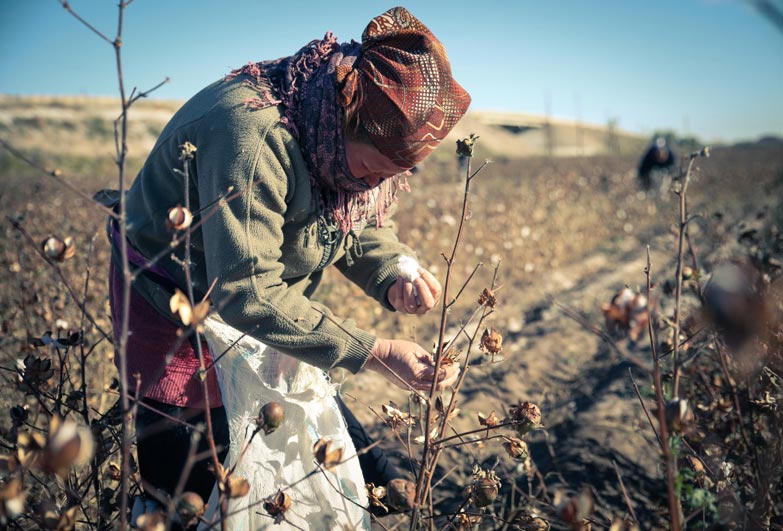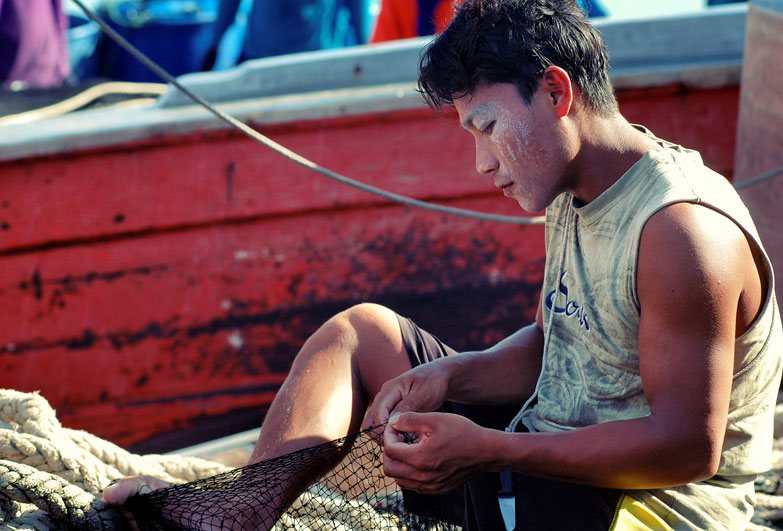What Type of Laborers Were Forced to Work Agains Their Will

"The worst function was that there was no residuum. I slept for two hours a night. There was no going out and no days off. When the bosses were out, the house was locked.
I soon learned that if we refused to piece of work, the constabulary would be brought in to make us work. Once I was slapped round the face up for not ironing my employer's scarf properly."
Lehmeire, Mauritanian domestic worker in Saudi Arabia
What is forced labour?
Forced labour is any work or service which people are forced to do against their will, under threat of punishment. Almost all slavery practices contain some element of forced labour.
Forced or compulsory labour is all piece of work or service which is exacted from whatever person nether the threat of a penalty and for which the person has not offered himself or herself voluntarily."
International Labour Organization Forced Labour Convention, 1930 (No. 29).
It affects millions of men, women and children effectually the earth. It is nearly ofttimes found in industries with a lot of workers and little regulation. These include:
- Agronomics and fishing
- Domestic work
- Construction, mining, quarrying and brick kilns
- Manufacturing, processing and packaging
- Prostitution and sexual exploitation
- Marketplace trading and illegal activities
Forced labour is the most common element of modern slavery. It is the most extreme form of people exploitation.
Although many people associate forced labour and slavery with concrete violence, in fact the ways used to force people to work are more than insidious and ingrained in some cultures.
Forced labour often affects the most vulnerable and excluded groups, for case commonly discriminated Dalits in India. Women and girls are more at risk than boys and men, and children make up a quarter of people in forced labour.
Migrant workers are targeted considering they often don't speak the language, have few friends, have limited rights and depend on their employers.
Forced labour happens in the context of poverty, lack of sustainable jobs and education, as well as a weak rule of police, corruption and an economic system dependent on inexpensive labour.

Where and how big is the problem?
Information technology's a global problem, although some regions accept larger numbers of people affected than others.
Number of people in forced labour worldwide (estimates by the 2012 International Labour Organization):
- 24.9 meg people beyond the globe
- eleven.vii million in Asia and Pacific
- 3.seven meg in Africa
- 1.viii million in Latin America and the Caribbean
- 1.5 million in developed economies (US, Canada, Australia, European union, Japan, Australia, New Zealand)
- 1.half-dozen million in Central, Southeast and Eastern Europe (non-EU) and the Commonwealth of Independent States
- 600,000 in the Middle East
- 16 million people in the individual economy
- four.eight meg are in forced sexual exploitation
- xiv.ii million are in labour exploitation in industries such as agriculture, construction, domestic work and manufacturing
- ten 1000000 children are in forced labour
- 4.1 million are forced to work nether governments and military rules
Larn more than about slavery
Subscribe to our emails to hear latest news about modern slavery, our piece of work confronting it around the globe, and different ways yous tin can take activity. You can unsubscribe whenever you want.
Discover out more
Source: https://www.antislavery.org/slavery-today/forced-labour/
0 Response to "What Type of Laborers Were Forced to Work Agains Their Will"
Post a Comment